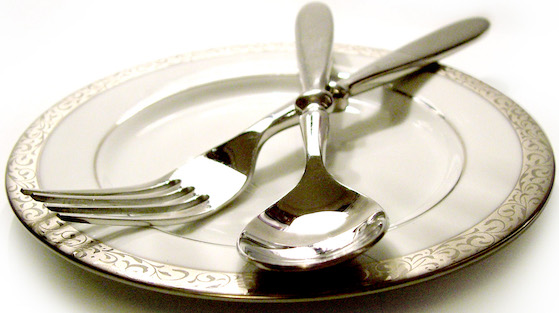Cooking Techniques To Increase Iron Level
Iron is an essential mineral vital for various bodily functions, including oxygen transport, energy production, and immune system support. Ensuring adequate iron levels is crucial for overall health, and one effective way to achieve this is through cooking techniques that enhance iron absorption. This article will explore various methods to increase iron levels in food through cooking, food pairings, and preparation techniques, providing you with actionable insights to boost your iron intake.
Iron level and its importance
Before diving into cooking techniques, it is essential to understand the significance of iron level. Iron exists in two forms in our diets: heme and non-heme iron.
-
-
- Heme iron: Found in animal products such as red meat, poultry, and fish, heme iron is readily absorbed by the body, making it a highly efficient source of this essential nutrient.
- Non-heme iron: Found in plant-based foods like legumes, grains, and vegetables, non-heme iron is not as easily absorbed. Its absorption can be influenced by various dietary factors, making cooking techniques crucial for maximizing its benefits.
-
Low iron levels can lead to iron deficiency anemia, resulting in fatigue, weakness, and impaired cognitive function. By incorporating effective cooking methods, you can significantly increase the iron levels in your meals.
Cooking techniques to enhance iron levels
1) Use cast iron cookware: One of the simplest yet most effective ways to increase iron levels in food is to use cast iron cookware. Cooking acidic foods, such as tomato sauce or citrus-based dishes, in cast iron pans can leach small amounts of iron into the food. This method is particularly beneficial for non-heme iron sources, as it adds a bioavailable form of iron to your meals.
2) Incorporate acidic ingredients: Cooking with acidic ingredients like tomatoes, vinegar, or citrus juices can enhance iron absorption. Acid helps solubilize iron, making it more available for absorption in the body. For example, marinating meats in citrus juices or vinegar-based dressings can improve the iron content of the meal. A salad dressed with lemon juice or vinegar served alongside a dish rich in non-heme iron can further enhance iron absorption.
3) Soak and sprout legumes and grains: Legumes and whole grains contain phytates, compounds that can inhibit iron absorption. Soaking and sprouting these foods before cooking can significantly reduce phytate levels, enhancing the bioavailability of non-heme iron. Soak beans, lentils, or grains in water for several hours or overnight, then rinse and cook them. Sprouting can also increase nutrient availability and improve digestion.
4) Combine iron-rich foods with Vitamin C: Vitamin C is known to enhance the absorption of non-heme iron. Pairing iron-rich foods with vitamin C sources can significantly boost iron levels in meals. For example, serve lentil soup with a side of citrus salad, or add bell peppers to a stir-fry with tofu and broccoli. These combinations not only improve iron absorption but also add variety and flavour to your meals.
5) Cook vegetables with healthy fats: Certain fats can enhance the absorption of fat-soluble vitamins and minerals, including iron. Cooking vegetables in healthy fats, such as olive oil or avocado oil, can improve the nutrient absorption. For instance, sauté spinach in olive oil or prepare a stir-fry with broccoli and sesame oil to increase the iron levels in your meal.
6) Utilise fermentation techniques: Fermenting foods can enhance their nutritional profile, including increasing iron bioavailability. Fermented foods like kimchi, sauerkraut, and miso contain beneficial probiotics that aid digestion and nutrient absorption. Incorporate fermented foods into your meals to boost iron levels. For example, add kimchi to rice bowls or use miso paste in soups.
7) Optimise cooking methods: Certain cooking methods can help preserve and enhance iron content in foods. Here are some tips:
-
-
-
- Steaming: Steaming vegetables helps retain nutrients, including iron, compared to boiling, which can cause nutrient loss in the cooking water. Steam spinach, kale, or broccoli to maintain their iron content.
- Quick cooking: Short cooking times, such as stir-frying or sautéing, can help preserve iron levels in foods. Overcooking can lead to nutrient degradation, so aim for quick, high-heat cooking methods.
- Avoid overcooking: Overcooked vegetables can lose their nutrient content, including iron. Aim for a tender-crisp texture to retain the maximum amount of nutrients.
-
-
8) Prepare iron-rich broths and stocks: Using bones to prepare broths and stocks can enhance the iron content of your meals. Bone broth is rich in minerals, including iron, and can be used as a base for soups and stews. Cooking beans or legumes in iron-rich broth can also boost their iron levels. Combine bones with acidic ingredients like vinegar to help extract minerals during cooking.
Meal planning for optimal iron levels
To maximise iron intake, consider meal planning with a focus on iron-rich foods and cooking techniques. Here are some strategies:
1) Plan balanced meals: Ensure your meals include a variety of iron-rich foods from both animal and plant sources. Incorporate lean meats, fish, legumes, nuts, seeds, and dark leafy greens into your meal plans. Aim for meals that combine both heme and non-heme iron sources for optimal absorption.
2) Create iron-rich snacks: Healthy snacks can also contribute to your iron intake. Consider options like hummus made from chickpeas, trail mix with nuts and seeds, or dark chocolate, which contains non-heme iron. Pair these snacks with vitamin C sources, such as citrus fruits or bell pepper slices, to enhance absorption.
3) Incorporate iron-fortified foods: Many cereals, breads, and plant-based milk products are fortified with iron. Including these in your meal planning can help increase your overall iron intake. Choose fortified cereals for breakfast and incorporate fortified plant-based milk into smoothies or cooking.
Monitoring your iron levels
Maintaining optimal iron levels is essential for overall health. Here are some tips for monitoring your iron status:
1) Regular health check-ups: Regular health check-ups and blood tests can help assess your iron levels. If you suspect low iron levels, consult with a healthcare professional who can recommend appropriate testing and dietary adjustments.
2) Keep a food diary: Tracking your food intake can help identify any gaps in your iron consumption. Maintain a food diary to monitor your meals, noting iron-rich foods and cooking techniques used. This practice can help you make informed dietary choices.
3) Observe symptoms of deficiency: Be aware of symptoms associated with low iron levels, such as fatigue, weakness, pale skin, and cognitive difficulties. If you experience these symptoms, seek medical advice to address potential iron deficiency.
Conclusion
Increasing iron levels through effective cooking techniques is an achievable goal that can significantly enhance your health and well-being. By using cast iron cookware, incorporating acidic ingredients, and optimising food preparation methods, you can improve the bioavailability of iron in your meals.
Take action for better iron levels
Start implementing these cooking techniques today to boost your iron intake. Prioritize meal planning, combine iron-rich foods with vitamin C, and use cooking methods that enhance nutrient absorption. Regular monitoring of your iron levels through health check-ups will ensure you maintain optimal health.
By making informed dietary choices and employing effective cooking methods, you can enhance your iron levels, support cognitive function, and improve your overall quality of life. Prioritize your health and embrace these techniques for a more nutritious future.



